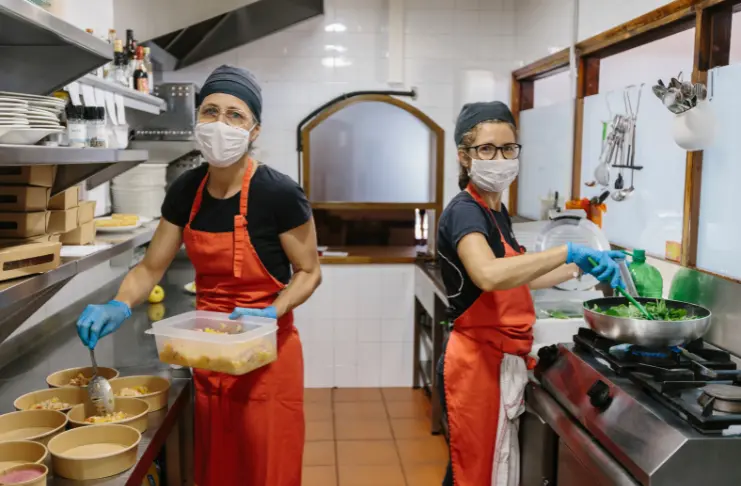The food industry has undergone a massive transformation in the last decade, and one of the biggest disruptors has been cloud kitchens. Unlike traditional restaurants, these kitchens operate without a physical dining space, relying solely on online orders and food delivery services. The best part about this model is its low overhead costs and increased operational flexibility, which makes it an extremely attractive option for most restaurateurs.
However, as the competition in the sector is fourfold, simply a launch-and-done won’t cut it. Every owner must try to figure out how to increase cloud kitchen sales. This could include mapping a strategic approach, incorporating digital marketing, customer engagement, operational efficiency, and menu optimization.
This blog will list a few proven tips and tricks you can follow to boost revenue and grow your cloud kitchen profitably. These insights will help you stay ahead in the current USD 70.97 billion market.
What Stage Does Your Cloud Kitchen Stand at the Moment?
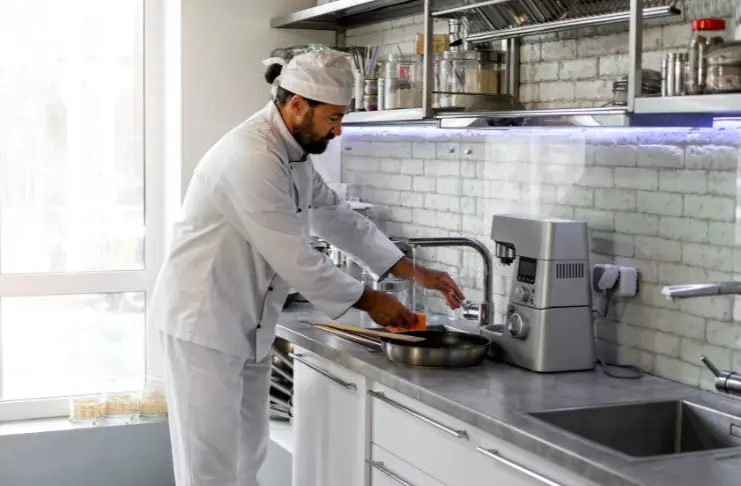
Before you implement any measure to increase your cloud kitchen sales, you must first analyze what stage your business is in at the moment.
Are you still in the early setup phase and struggling to establish a consistent customer base? Or are you scaling rapidly but finding it difficult to maintain profitability?
Identifying Your Business Stage
Ask yourself these key questions to determine where your cloud kitchen stands:
Launch Phase:
- Have you recently started operations and are still figuring out your customer preferences?
- Are you struggling to break even or get consistent orders?
- Is your brand still gaining visibility on delivery platforms and social media?
Growth Phase:
- Have you started receiving regular orders but are struggling to scale beyond a certain revenue level?
- Are operational inefficiencies, rising ingredient costs, or marketing expenses impacting profitability?
- Do you find it challenging to attract customers despite offering discounts and promotions?
Expansion Phase:
- Are you seeing steady profits and looking to expand your menu and delivery reach or launch additional brands?
- Do you have a loyal customer base but need to optimize operational efficiency for better margins?
- Are you considering multi-brand strategies or investing in advanced technology to streamline operations?
How to Use This Evaluation
Once you identify your current business stage, you can align your growth strategies accordingly. For example:
- Early-stage businesses should focus on visibility, branding, and customer acquisition.
- Growing businesses should optimize menu pricing, improve marketing, and build customer loyalty.
- Scaling businesses should refine operations, cut unnecessary costs, and explore expansion opportunities.
Understanding your current growth phase will ensure you apply the right tactics at the right time so as to avoid common pitfalls and maximize revenue effectively.
Key Challenges That Affect a Cloud Kitchen’s Sales

While the cloud kitchen model offers cost advantages and flexibility, many businesses struggle to scale effectively due to common challenges. Recognizing these obstacles is important because only when you understand what’s limiting your revenue growth can you implement the right solutions to overcome them.
High Competition in the Food Delivery Market
Cloud kitchens operate in an increasingly crowded digital marketplace. With numerous brands offering similar cuisines, standing out becomes difficult, especially when most customers choose based on convenience, discounts, or platform recommendations rather than brand loyalty.
Rising Customer Acquisition Costs
Unlike physical restaurants that benefit from walk-in traffic, cloud kitchens must rely heavily on digital marketing and food delivery platforms to reach customers. This increases customer acquisition costs, especially when advertising budgets are required to maintain visibility.
Inconsistent Order Volume & Customer Retention Issues
Many cloud kitchens face unpredictable order patterns—some days may see a surge in sales, while others are slower than expected. Plus, acquiring repeat customers is challenging, as many customers prefer variety and frequently switch brands.
Menu Optimization & Pricing Difficulties
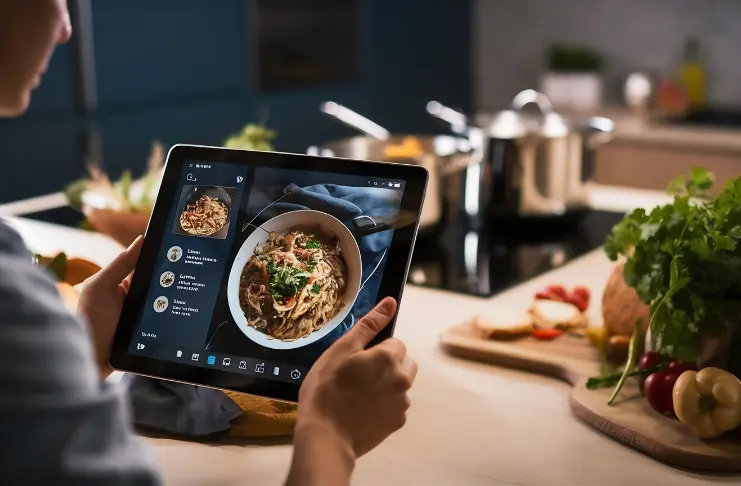
A cloud kitchen’s menu plays a significant role in profitability. If your pricing isn’t optimized for high-margin dishes or your menu variety isn’t designed for repeat orders, you may struggle with profitability and customer retention. For example, offering too many items may lead to unnecessary operational complexity. Similarly, pricing dishes too low or too high affects their perceived value and profits. So, be wary of these.
Delivery Logistics & Food Quality Concerns
Since cloud kitchens rely entirely on food delivery, any inefficiency in packaging, preparation time, or delivery routes can impact the customer experience. Negative reviews due to late delivery or food quality issues can hurt its reputation and sales.
Operational Costs Eating into Profits
Even though cloud kitchens eliminate dine-in costs, they require investments in kitchen rentals, ingredient sourcing, labor, technology, and marketing, and if not managed wisely, these expenses can quickly reduce profit margins.
Limited Brand Recognition & Customer Trust
Cloud kitchens don’t have a physical storefront. This means building brand trust and recognition becomes a challenge compared to established dine-in restaurants. Customers may hesitate to try new virtual brands if they lack strong reviews or visibility.
That said, now the question is: how can you overcome these challenges? Below are the proven strategies to increase your cloud kitchen sales like never before.
Number 1: Understanding Your Target Audience

The first step to increasing cloud kitchen sales is to deeply understand who your customers are, what they want, and how they behave when ordering food online. Why should you do this? Because knowing your target market will help you:
- Create a menu that matches your customer preferences
- Optimize marketing campaigns for higher conversions
- Increase customer retention by offering personalized experiences
- Improve operational efficiency by predicting order patterns
Without a clear picture of your target audience, even the best marketing tactics and menu optimizations may not yield consistent revenue growth.
So, here’s a step-by-step process to identify and analyze your audience effectively:
Step 1: Define Your Ideal Customer Profile
Outline who your most frequent customers are. Consider these factors:
Demographics:
Age Group – Are your customers mostly young professionals, families, or students?
Location – Which areas drive the highest orders? Do customers prefer deliveries from central business districts or residential neighborhoods?
Income Level – Are they looking for budget-friendly meals or premium gourmet experiences?
Behavioral Patterns:
Order Frequency – Do they order daily, weekly, or occasionally?
Peak Ordering Hours – Do they order more during lunch, dinner, or late-night hours?
Cuisine Preferences – What type of food sells the best: fast food, healthy meals, Indian, continental, or fusion?
Spending Habits – Are they price-sensitive, or do they prioritize food quality and brand reputation?
Step 2: Leverage Data Analytics for Deeper Insights
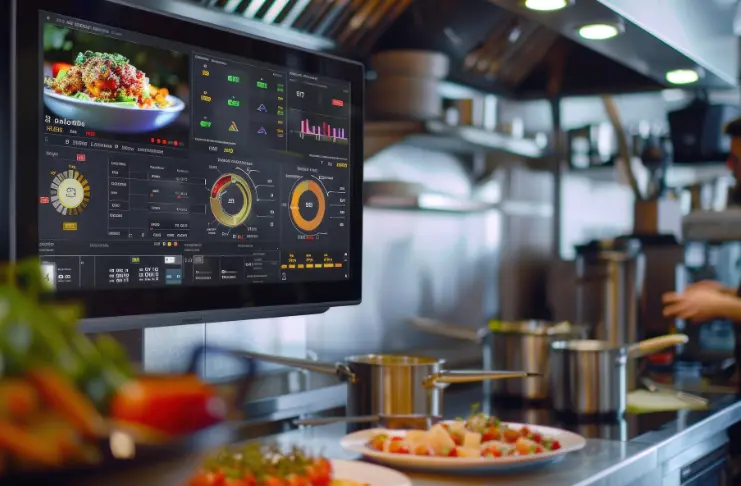
Instead of relying on assumptions, use actual data from your existing sales and online platforms to fine-tune your understanding.
Analyze Food Delivery App Reports
Check analytics from Uber Eats or DoorDash to understand:
- Most popular items ordered from your menu
- Average order value and spending trends
- Customer repeat rate and retention
Use Website & Social Media Insights
If you have a website or social media presence:
- Google Analytics can show visitor demographics, locations, and engagement levels.
- Instagram & Facebook Insights highlight which posts drive the most interactions and customer engagement.
Conduct Direct Surveys & Polls
Running email surveys, WhatsApp polls, or social media questionnaires can help you gather valuable customer feedback. You could ask questions like:
- What food do they want more of?
- What delivery timings work best for them?
- What promotions or discounts would encourage repeat orders?
Step 3: Segment Your Audience for Targeted Growth
Once you have a clear customer profile, segment your audience into different groups and tailor your approach accordingly.
For example, for frequent buyers, you could offer loyalty programs to increase repeat purchases. Giving welcome discounts to first-time customers will encourage trial orders. You could also create meal subscription plans for corporate clients.
Segmenting your audience this way will help you create personalized marketing campaigns, optimize your menu, and adjust pricing to maximize sales.
Number 2: Optimizing Online Presence for Maximum Visibility
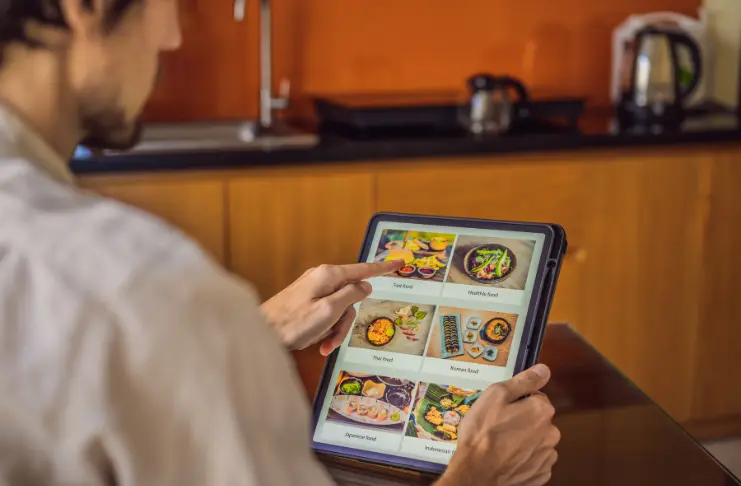
Now that you understand your target audience, the next step is to ensure they can easily find your cloud kitchen online. Since cloud kitchens rely entirely on digital interactions for sales, visibility across multiple online platforms is non-negotiable.
Step 1: Strengthen SEO for Your Cloud Kitchen Website
If your cloud kitchen has a website, optimizing it for search engines ensures you appear in Google searches when customers look for food delivery options nearby. How can you optimize your website for SEO?
- Use high-intent keywords like “best biryani near me” or “healthy meal delivery in [city]” across your website content, menu descriptions, and blog posts. (No stuffing, though.)
- Optimize your Google My Business (GMB) listing with accurate location details, updated menus, and customer reviews.
- Get listed on local food directories and blogs to boost rankings.
- Ensure your site is mobile-friendly and fast for a better user experience.
- Add structured data markup to help search engines understand your menu better.
Step 2: Try to Rank Higher on Food Aggregator Platforms
Most cloud kitchens rely heavily on food delivery platforms to reach customers. If it’s the same for you, optimize your presence on Uber Eats, DoorDash, or Grubhub.
- Use high-quality food images: Listings with mouth-watering visuals get more clicks and conversions.
- Optimize menu descriptions: Instead of generic titles, add detailed descriptions that include popular keywords (e.g., instead of “Burger,” try “Burger with Double the Patties and Cheese”).
- Get more reviews & ratings: Encourage customers to leave positive ratings to improve rankings and credibility.
- Participate in sponsored listings: Invest in featured promotions to appear at the top when customers browse food options.
Step 3: Optimize Your Social Media
Food delivery is highly visual, and thus, strong social media branding can turn casual visitors into paying customers. To grow your organic reach on social media platforms:
Instagram & Facebook: Post high-quality food photos & videos, run giveaways & contests, and engage customers through Stories & Reels.
TikTok: Create short-form content, such as cooking clips, packaging processes, or behind-the-scenes kitchen moments.
Twitter & LinkedIn: Use Twitter for instant promotions and LinkedIn if targeting corporate meal deliveries.
Besides these, you can also collaborate with local food bloggers to reach larger audiences. Also, if possible, always try to be user-centric in your posts. You could share user reviews, testimonials, and customer moments to build trust.
INDUSTRY INSIGHT
| Influencer marketing can be a game-changer for food and beverage brands aiming to enhance their social media presence. In 2023 alone, creators produced over 1.2 million posts about food and beverage brands, resulting in approximately 75 billion impressions and 3 billion consumer interactions. This surge underscores the effectiveness of collaborating with influencers to boost your cloud kitchen’s brand visibility and engagement. Not to mention, the influencer marketing industry has seen substantial growth, reaching a valuation of approximately $33 billion in 2025. |
Step 4: Build Brand Credibility for Higher Conversions

Since cloud kitchens don’t have a physical storefront, establishing trust is critical for customer retention. Here are a few tips to strengthen your brand credibility:
Professional Packaging & Branding: Invest in branded packaging, custom stickers, and personalized messages for a premium feel.
Consistently High Ratings: Encourage positive reviews by offering incentives for loyal customers.
Food Quality Assurance: Maintain consistent taste and presentation—the same customer should never experience variations in quality.
Customer Support Availability: Offer quick support through WhatsApp or chatbot services to resolve concerns instantly.
Remember, having a great menu and strong business strategy won’t matter if people can’t find your cloud kitchen online. Optimizing your presence on Google, social media, and food delivery platforms will ensure you stay competitive and accessible to your target audience.
Number 3: Optimizing Menu & Pricing for Maximum Profitability

A cloud kitchen’s menu and pricing directly impact its sales and profit margins. Customers make quick decisions when ordering online, so a well-optimized menu can significantly boost conversions and profitability. How can you go about it?
Step 1: Create a Profitable, Palatable, & High-Converting Menu
A cluttered menu can confuse customers and slow down order decisions, reducing conversions. The key is to design a menu that is simple, easy to navigate, and strategically optimized for profitability. You could:
- Limit Choices: Too many options overwhelm customers; stick to a focused menu with high-performing dishes.
- Use Popular & Familiar Names: Avoid confusing names; instead, highlight key ingredients and flavor profiles in dish titles.
- Create Combo Deals & Bundles: Offer high-margin combinations that encourage customers to order more per transaction.
- Prioritize Best Sellers: Place your most profitable items at the top for higher visibility.
Step 2: Set Pricing to Maximize Revenue
Below are the psychological pricing techniques that “actually” boost sales:
- Charm Pricing (Ending Prices in 9s): Set prices like ₹199 instead of ₹200 to make them appear cheaper.
- Anchor Pricing (Showing a Higher Price First): Display strikethrough prices, such as “₹349 Now ₹299”, to create perceived savings.
- Tiered Pricing (Offering Multiple Choices): Use small, medium, and large portions to encourage upselling (e.g., ₹149 for regular, ₹199 for large).
- Value-Based Pricing (Charging for Perceived Worth): Premium ingredients or unique flavors justify higher prices.
How to Calculate Profit-Driven Menu Pricing?
Cost-Based Pricing Formula: Use Total Ingredient Cost × 3 to ensure a minimum 70% profit margin per dish.
Competitor-Based Pricing: Compare similar items on DoorDash or Uber Eats to set competitive yet profitable rates.
Profit Maximization Through Bundles: Pair high-margin dishes with lower-cost items in combos to increase revenue without reducing profits.
Step 3: Reduce Ingredient & Operational Costs Without Compromising Quality
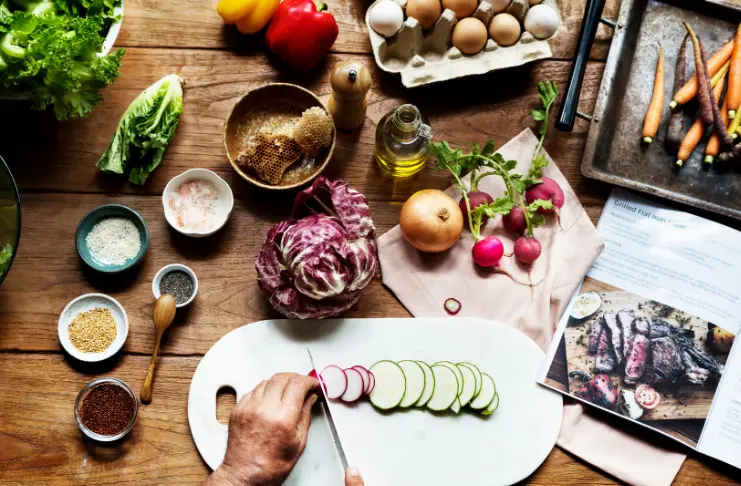
Some of the best ways to cut your food costs while maximizing profits include:
Bulk Ingredient Procurement – Negotiate deals with suppliers for discounts on large purchases.
Minimize Food Waste – Use AI-powered inventory tracking to reduce spoilage and excess orders.
Efficient Portion Control – Ensure standardization in portion sizes to maintain consistency and optimize ingredient use.
Alternative Supplier Sourcing – Compare vendors to find better-priced, high-quality raw materials.
Number 4: Improving Food Delivery & Packaging for Higher Retention
Cloud kitchens thrive on efficient food delivery. If food arrives late, cold, or damaged, it negatively impacts repeat business and overall brand trust. Optimizing delivery logistics and investing in premium packaging can significantly boost customer retention, reviews, and long-term loyalty.
Step 1: Ensure Fast & Reliable Delivery Logistics
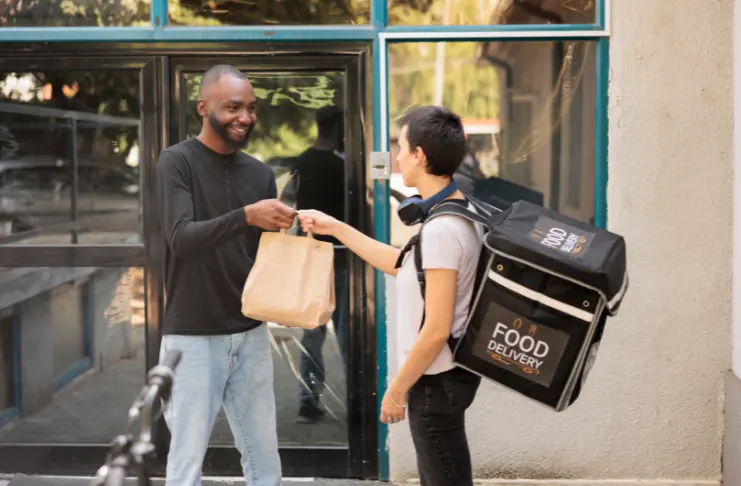
Timely delivery is important for maintaining customer satisfaction. Late orders often lead to negative reviews and lost future sales. So, what should you do?
- Partner with Multiple Food Delivery Platforms like Uber Eats, Grubhub, DoorDash, etc., to maximize reach.
- Use AI-based smart dispatching or route optimization to reduce delivery delays.
- Offer customers a live order tracking facility for improved transparency.
- Place your cloud kitchen near high-demand areas for quicker deliveries.
Step 2: Invest in Premium Packaging for Food Safety & Presentation
Good packaging protects food quality, enhances brand perception, and improves the overall customer experience. You should:
- Use insulated packaging to retain food warmth during delivery.
- Prevent spills with secure lids & compartmentalized trays.
- Use eco-friendly materials to boost and appeal to eco-conscious consumers.
- Add stickers, thank-you notes, and branded packaging for better customer engagement.
Special Packaging Tips for Different Food Types:
Hot Meals: Use foil-lined containers for heat retention.
Cold Items (Salads, Desserts): Invest in airtight containers with cooling insulation.
Liquid-Based Foods: Ensure double-sealed lids to prevent leaks.
Fried Items: Include vented packaging to avoid sogginess.
Step 3: Offer Delivery-Based Customer Perks
Adding delivery perks enhances customer satisfaction and encourages repeat orders. For example, you could prioritize delivery for premium orders. This means a customer will have the option to pay extra for express delivery.
Next, include handwritten thank-you notes or discount codes inside the package whenever possible.
You could also offer free delivery for returning customers after a certain number of orders.
Number 5: Investing in Technology for Operational Efficiency
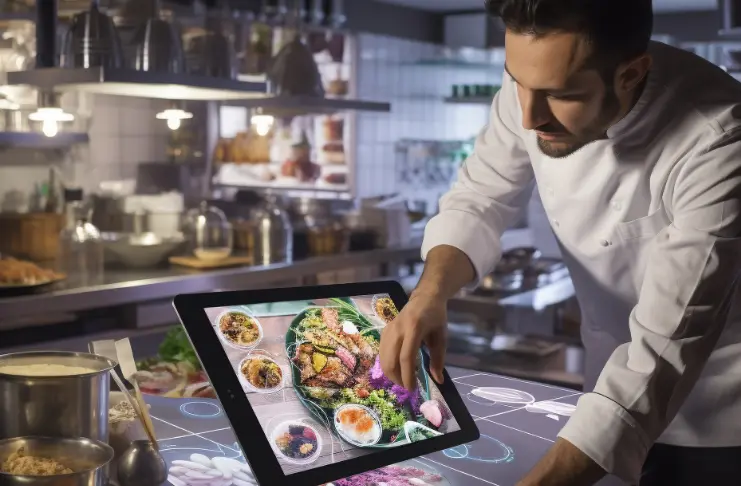
While increasing sales is important, controlling expenses is equally critical for maximizing profitability in a cloud kitchen. Reducing costs without compromising food quality or customer satisfaction ensures sustainable growth while maintaining high margins. This is achievable via the right tech stack.
Here’s a quick checklist of cloud kitchen technologies you should consider:
- Integrated POS System
- Inventory Management Software
- Recipe & Food Costing module
- Central Kitchen Management System
- Vendor Management & Procurement Automation
- Order Management & Delivery Aggregators
- Data Analytics & Reporting Dashboard
Bonus Tip: Labor Cost Optimization
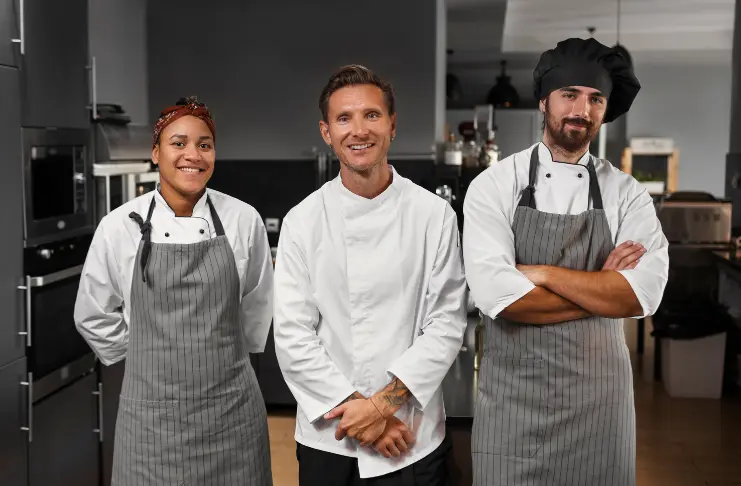
Overstaffing leads to unnecessary expenses, while understaffing affects food prep speed and customer satisfaction. Both are dangerous. You’d better optimize your kitchen staff costs this way:
- Assign shifts based on peak ordering times to prevent idle labor hours.
- Equip staff with multiple skill sets to handle different roles when needed.
- Use AI-based order processing software to reduce manual handling and speed up workflow.
- Consider third-party cleaning or maintenance services instead of hiring full-time staff.
In 2025, many kitchens are also turning to robotic technologies and automation to reduce their labor costs. For instance, Amy’s Kitchen, a well-known vegetarian food company in California, implemented the Chef Robotics system to achieve a 17% increase in labor productivity, a 12% improvement in product consistency, and a 4% reduction in food giveaway.
Conclusion
Scaling a cloud kitchen beyond basic survival requires a strategic, multifaceted approach that balances customer acquisition, operational efficiency, and long-term retention strategies.
Still, by consistently implementing the “right” strategies, your cloud kitchen can thrive amid competition, scale profitably, and build a loyal customer base that fuels sustainable success.
Frequently Asked Questions
1. How to boost cloud kitchen sales?
To boost cloud kitchen sales, you need to treat your digital storefront the way a traditional restaurant treats its high street location. That means:
– Optimize your presence on delivery apps
– Run paid ads during peak hours
– Keep your menu tight and delivery-friendly
– Use customer data to craft high-converting offers.
2. Is CloudKitchens profitable?
Profitability in cloud kitchens (or any ghost kitchen model) comes down to operational efficiency. With lower rent, staffing, and front-of-house costs, these setups can be very profitable, especially in high-demand urban zones. However, margins still depend on food cost control, order volume, and repeat business.
3. How to run a successful cloud kitchen?
Running a successful cloud kitchen isn’t just about cooking great food—it’s about mastering logistics. You’ll need standardized recipes, a solid tech stack (POS + inventory), airtight prep workflows, and consistent quality control. And above all, treat every online order like it’s the only one that matters.
4. How to promote a ghost kitchen?
Promotion for a ghost kitchen lives online, so your visibility on delivery platforms, social media, and Google is everything. Use in-app ads, influencer shoutouts, loyalty perks, and first-order discounts to get traction. Then, follow up with remarketing to turn one-time buyers into regulars.
5. How to increase cloud kitchen sales?
Increasing sales means two things: getting more orders and increasing ticket size. To do both, focus on delivery optimization (speed, packaging), upsell strategies (add-ons, combos), and customer retention through personalized offers. A/B test what works, and double down.
6. Is a ghost kitchen profitable?
Yes, but it depends. Ghost kitchens are profitable when you get the fundamentals right: low overheads, streamlined operations, high delivery volumes, and smart marketing. Done poorly, they can burn cash just as fast as dine-in restaurants.
7. What is the minimum investment for a cloud kitchen?
Starting a cloud kitchen in the U.S. typically requires a minimum investment of $20,000 to $35,000. This covers essential costs like kitchen equipment, rental of a shared or commissary kitchen space, business licenses, insurance, initial inventory, packaging, and basic digital branding.
8. How much is CloudKitchens worth?
CloudKitchens, the company founded by Uber’s ex-CEO Travis Kalanick, has been valued at over $15 billion as of its last known funding rounds. It’s a major player in the global ghost kitchen infrastructure space.
9. What is CloudKitchens’ annual revenue?
While CloudKitchens doesn’t publicly disclose exact figures, industry estimates peg its annual revenue in the hundreds of millions of dollars, driven largely by kitchen rentals and real estate income streams.
10. Who is the largest cloud kitchen company in the world?
Globally, Reef Technology (U.S.) and CloudKitchens dominate the ghost kitchen market in terms of kitchen network scale and funding. In Asia, Rebel Foods holds the lead in terms of brand portfolio and delivery volume.
11. How do I market my cloud kitchen business?
Marketing a cloud kitchen starts with visibility. Leverage delivery apps, run geo-targeted ads on Instagram and Google, claim your Google My Business listing, and build a loyal base with WhatsApp marketing or SMS campaigns. Word of mouth travels fast—even online.
12. Can I invest in CloudKitchens?
If you’re looking to invest in CloudKitchens itself, it’s currently a private company, so public shares aren’t available. However, you can explore franchise models or invest in your own cloud kitchen with support from platforms like Kitchen@ or Kitchens Centre.
13. How does CloudKitchens work?
CloudKitchens operates on a real-estate-plus-technology model. They lease properties, convert them into modular kitchen units, and rent these to food brands. Operators then use delivery platforms to fulfill online orders.


